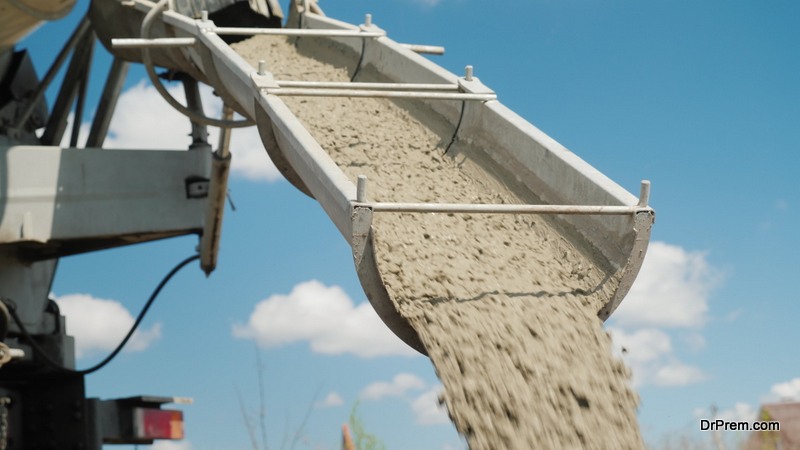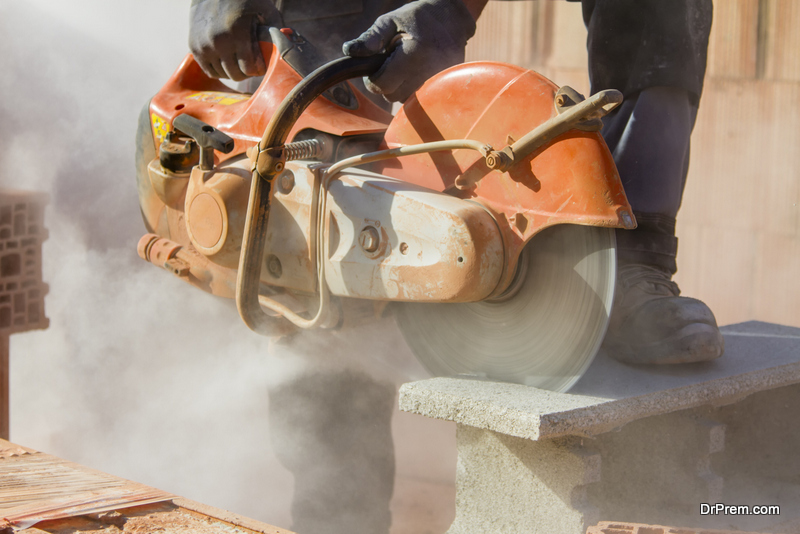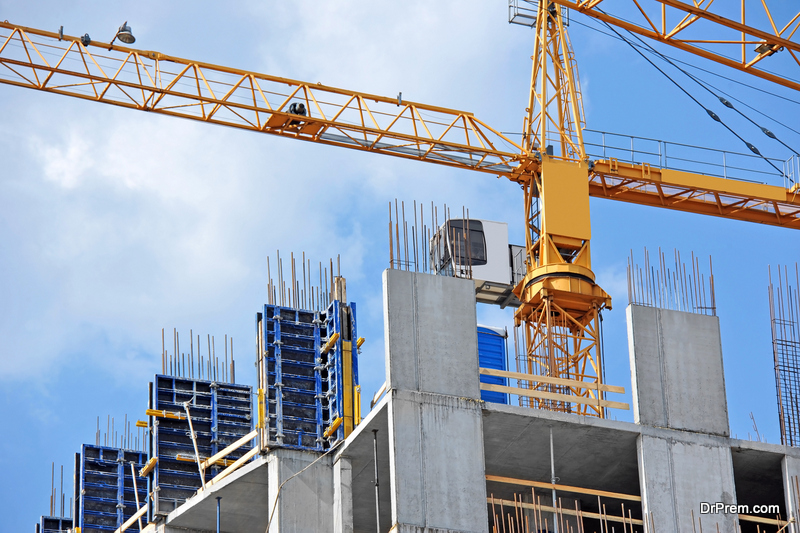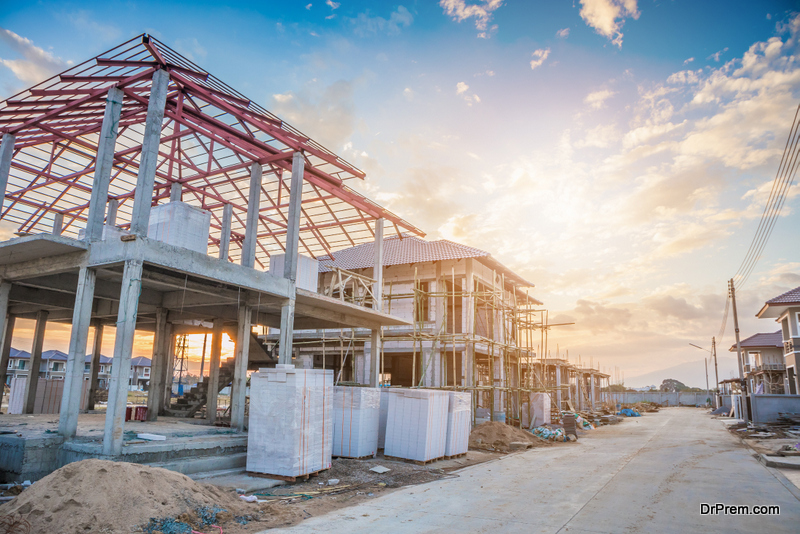Construction sector is ever-expanding as cities and towns are growing. This sector uses over 400 million tons of construction material every year, and many of these materials have negative impact on environment. The extraction, use and waste of materials add to the problem. Chemicals on site, excessive use of energy also create problems. However, the impact of construction on environment is mostly negative; there are some ways in which the negative impact can be reduced.
What is the impact of construction on environment?
According to a recent study by Bimhow, the construction sector is responsible for 23% air pollution, 40% of drinking water pollution, 50% climate change and 50% landfill waste. Another research by US Green Building Council (USGBG) pointed out that construction sector is responsible for about 40% of the world’s energy use. The council estimated that the emissions from buildings (commercial) will increase by 1.8% by the year 2030.
1. Construction activities change the lay of the land
The EPA states that the process of extraction of construction materials considerably changes the land surface due to excavation and clearing of the vegetation. This results in pollution of the surrounding environment, especially the water in the vicinity. The unsustainable methods used to produce raw material as well as the fuel used to transport the materials, sometimes even overseas, end up damaging the surroundings.
2. Increases particulate pollution
Construction materials such as aluminum, concrete and steel are responsible for the large amounts of greenhouse gas emissions. The GHG emissions contribute to global warming, thus leading to climate change. Urban housing construction increases the amount of particulates in the air, which causes many respiratory problems. In countries such as India, where there has been a surge or urban development, the cities are covered in thick layers of dust, partly caused by construction activity.
3. Excess energy and water is used
 According to the USGBC, the constructing buildings and homes use approx 41% of the total energy use of the world. This is due to the large amount of energy which the machinery uses to build.
According to the USGBC, the constructing buildings and homes use approx 41% of the total energy use of the world. This is due to the large amount of energy which the machinery uses to build.
Scarcity of water has been noticed in many parts of the world. Water tables worldwide are gradually depleting. Conventional construction methods do not recognize this and continue to use and waste this valuable natural resource. Buildings are estimated to use 13.6% potable water, water which could have been used as drinking water for animals and humans.
4. Construction waste fills up the landfills
The waste management methods in construction have to improve a lot. The renovation and destruction of the buildings generate great quantities of waste. Metals, concrete, glass, wood, bricks, asphalt etc are wasted and then disposed off in incinerators and landfills. This results in atmospheric and land pollution, but the transportation used in the process also has a negative impact of construction on environment.
Can there be positive impact of construction on environment?
Concerned builders and home/property owners can take steps to reduce the impact of construction on environment.
1. Sediment and erosion control
 The first step which can be taken by the construction firms is to design in a way that soil erosion is reduced during construction. The proper mechanisms to curtail storm water should also be installed to construct green buildings which will reduce sediments from escaping into nearby waterways.
The first step which can be taken by the construction firms is to design in a way that soil erosion is reduced during construction. The proper mechanisms to curtail storm water should also be installed to construct green buildings which will reduce sediments from escaping into nearby waterways.
2. Soil stabilization methods should be used
To limit the impact of construction on the environment, the excavation process should take care that the soil is stabilized according to the local regulations, especially if the construction project is huge.
3. Pollution prevention should be initiated
 The process of construction results in many types of pollution. One of these is chemical pollution. Measures should be taken so that the workers and environment is not harmed during construction by the chemicals.
The process of construction results in many types of pollution. One of these is chemical pollution. Measures should be taken so that the workers and environment is not harmed during construction by the chemicals.
The EPA suggests that the construction should be designed in such a manner that pollution is prevented. The discharge of pollution from transportation (site vehicles) used in construction, wheel washing water and chemical should be curtailed.
Wastewater discharge from concrete washout
Wastewater discharge from painting and release of various oils and curing compounds
Discharge of oils and fuels as well as other pollutants which are used for equipment and vehicle operation as well as maintenance.
In order to limit fossil fuel pollution, construction projects should try to minimize the impact of construction on environment by reducing haul distances, reducing vehicle idling, using green, alternative fuels and using hybrid equipment. By decreasing fossil fuel use, the gas emissions also can be decreased thus leading to better air quality.
4. Reduce noise pollution
The noise generated by construction is considerable. The maximum noise is produced during the preparation of the site, demolition as well as landscaping. The noise arising from construction can be an irritant to residences and schools nearby, hampering the quality of life and work within. To avoid noise becoming a problem, construction activities should begin and end at regulated times. Construction firms could send letters to people and institutions in the neighborhood, informing them about the times of work, and the duration of the project, as a goodwill gesture.
5. Dispose waste properly
Hundreds of millions of tons of construction waste is generated worldwide. Demolition causes the maximum waste which is disposed off in landfills or by incineration. Both the methods release harmful GHG into the air. By reusing, salvaging and recycling the existing materials, the impact of construction on environment can be limited.
The hardware, fixtures and appliances can be used again or sent for recycling, or can be donated to people who are in need of them. Concrete and brick can be reused and recycled and used as driveway bedding fill. Wood and metals can be recycled for various uses.
6. Utilizing new technology
Wherever possible, new technology can be used. For instance, inflatable water dams can be utilized to fight erosion, prevent sedimentation and water runoff. This dewatering solution can be used in other construction projects as well.
By expediting construction projects, associated emissions as well as fuel costs can be reduced. Adhere to the completion goals using green methods, as the sooner the project is completed, the lesser the impact of construction on environment.







